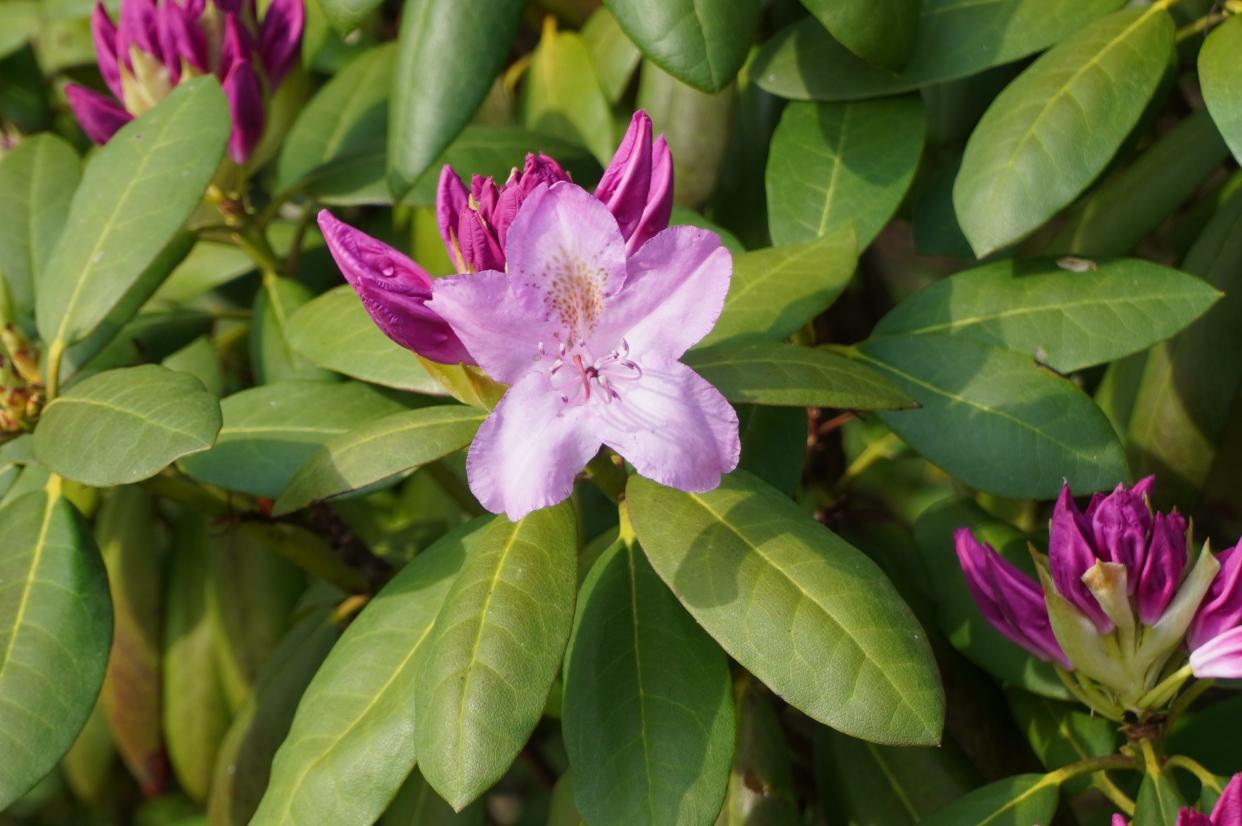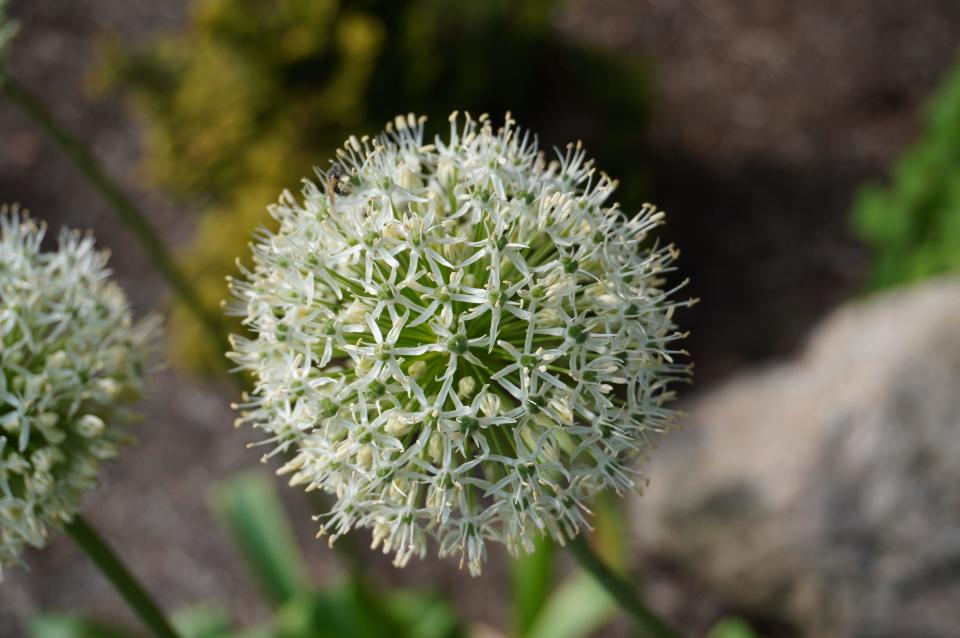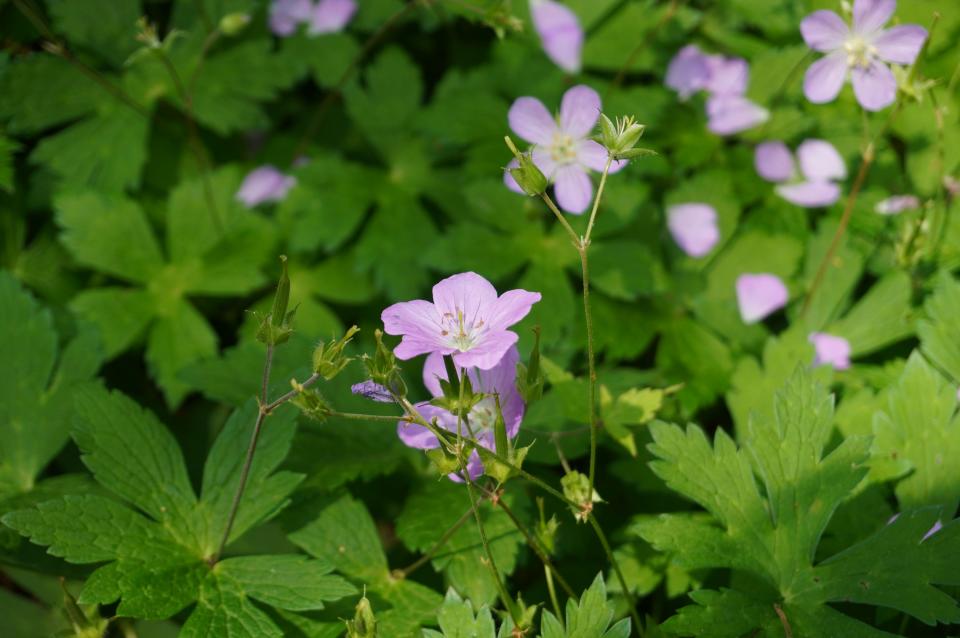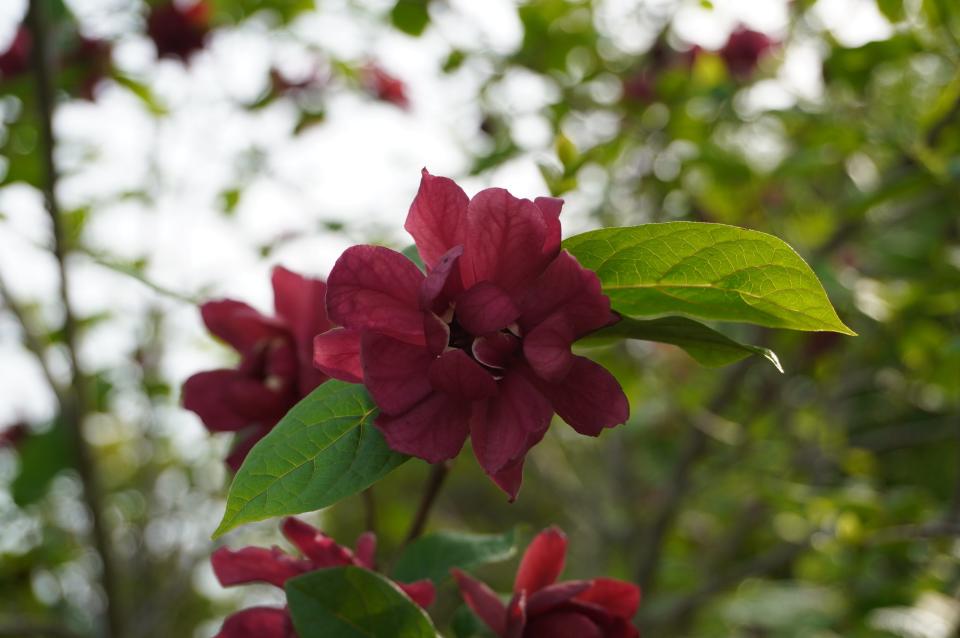Plant Lovers' Almanac: See wildflowers in roadside finery, plus edible and ornamental plants

In springtime we are used to considering our Northeast weather extremes as unmanageable, if not unprecedented, and many heat records in the northeastern U.S. were broken last weekend. But I also follow Denver weather where my daughter and her family live. A week ago I took a look on my weather app: predicted for the next day, 90 degrees – and within 48 hours, 6 inches of snow. So, bring it on, Buckeye State.
Speaking of which, red buckeyes and horse chestnut-buckeye hybrids are in full flower, azaleas and rhododendrons are in brilliant bloom at Secrest Arboretum in Wooster, and on the darker side, sawflies are stripping last year’s foliage on pines, and the maidenhair-foliage of ginkgoes is alternately normal and shriveled depending on whether they were tender when we had one of our spring frosts a few weeks ago. They look a little odd, but the ginkgo trees will be fine: after all they have been dealing with this sort of thing for about 200 million years now.

Alliums
The Allium genus is becoming more important as a garden ornamental, though it is mostly a crucial food plant in most cultures, including the United States. Do you believe me about the food?
Well, alliums include onions, garlic, shallots, leek, chives, ramps. Where would we be without onion rings and onion soup, garlic bread, onions as a key stir-fry ingredient and on pizza, scallion cream cheese for our bagels, leek soup, onions on hot dogs and burgers and paired with liverwurst, and the collection of wild ramps in the woods?
Those native ramps (Allium tricoccum) bring collectors a healthy bounty from fancy restaurants during May-time ramp collection season in woods of the Appalachians.
In “Kitchen Confidential,” an early book by the late Anthony Bourdain, he reveals that shallots are one of the key secrets of restaurant chefs when they want to ramp up savory flavor. And cippollini onions with steak, oh my. Some people prefer their onions sweet, which has led to the popularity of Vidalia onions from Georgia, a series of sweet onion types that have sugar content at around 12% compared to an average onion sugariness of 5%.
Soil also plays a part. When sulfate content, which give alliums their aroma and flavor is low, then onions are sweeter. Such soils exist in certain Georgia counties, the Walla Walla, Washington, area and Maui. But according to the Vidalia Onion Committee in Georgia, “all Vidalias are sweet onions, but not all sweet onions are Vidalias.” I can attest that the Walla Wallas are sweet, though: my Ohio State University Extension buddy Erik Draper and I ate them raw like apples when we toured eastern Washington years ago.

The Allium genus is in the Amaryllidaceae, along with daffodils, snowdrops and of course those brightening-of-winter indoor bulbs, amaryllis. There are hundreds of species of Allium worldwide, with almost all in the Northern Hemisphere, with much of the diversity in China, the Mediterranean, and western North America. The name “Allium” comes from the Latin word for garlic. It is not only the bulbs but also other plant parts of Alliums (such as scallion stems) that owe their aroma and flavor to sulfates.
So, the case is clear relative to onions as an essential food, but what about as an ornamental garden plant?
I have long enjoyed the long, pencil-like scapes, parallel-veined leaves and especially the globe-shaped flower heads of ornamental alliums at Secrest Arboretum, with 30- to 50-inch-long scapes, architecturally creating height in the garden, and the six-sepaled petal-like starry flowers.

I am used to the white-flowered “Mount Everest” cultivar and the various purple- and lavender-flowered types, but am tempted to learn more about alliums after reading an article from my friend Bobbie Schwartz, horticulturist and owner of “Bobbie’s Green Thumb.” She regales her readers about “The Versatility of Allium,” including types with yellow and blue flowers and scapes that range from 8 inches high to giants exceeding 4 feet tall.
I’m all in for Allium. In fact, as I wrote this I decided to watch and listen to a video of “Green Onions” the 1962 Booker T. and the MGs instrumental hit with Booker T. on the Hammond organ. Originally a B-side to “Behave Yourself,” it went on to become No. 3 in the Billboard Hot 100 and No 1 for four weeks on the soul charts. In Rolling Stone’s Top 500 Songs of All Time, it is 181, the only instrumental. Memphis loves its Alliums.

Roadside finery
It is the time of year for pinks, purples and lavenders in our wildflowers/weeds. Here are two: dame's rocket, and one of my favorites, wild geraniums.
Dame’s rocket (Hesperis matronalis) is a non-native that is popping up now along the roads, actually in variations of purple, lavender, pink and white, as there is a great deal of crossing, resulting in color variation. As noted in an earlier Plant Lovers' Almanac, it is misidentified sometimes as phlox (another lavender or pink flower), but it has four petals rather than the five of phlox.
Dame’s rocket is non-native and unappreciated by many, and another member of the mustard family with its cruciferous cross-like four petals and stamen arrangement. The lavender-hued native wild geranium (Geranium maculatum) is more delicate, more of a woodland flower, but prolific along a Wayne County roadside near Orrville this weekend.
I enjoyed this as a summer camp worker 50 years ago and as a graduate student working on one of its cousins, the south African original, florist’s geranium (Pelargonium x hortorum), 45 years ago.
The genera Geranium with many garden perennials and Pelargonium, the quintessential annual flower box bloomer, are in the Geraniaceae family, and Geranium is a huge genus, made up of over 400 species from around the world. Both are named for the shape of their beak-like fruits: “gerontos” meaning crane-bill and “pelargos” meaning stork-bill.

Calycanthus
This genus of native shrubs contains four species, the most common in U.S. gardens being C. floridus, with the common name of Carolina sweetshrub or strawberry-flower, for its mildly sweet and spicy spring aromas when crushed.
I learned of sweetshrub years ago when the flowers were a little-noticed treasure, usually dark burgundy-red and about an inch in size. Now, though, there are many types from white to yellow and various shades of red.
The big horticultural advance is of hybrids between C. chinensis and C. floridus, especially ones such as Calycanthus x raulstonii “Hartlage Wine” named for J.C. Raulston and his North Carolina State graduate student Richard Hartlage. A big feature: The flowers are 3 inches wide and very showy.
Finally, back to onions. Not usually a source of poetry, but here is William Robinson:
“Now peaches are peachy, but fuzzy,
And apples delicious, it’s true,
But my favorite is the onion –
I’ll send a bouquet of green onions to you.”
Jim Chatfield is a horticulture educator and professor emeritus at Ohio State University Extension. If you have questions about caring for your garden and other topics, write to chatfield.1@osu.edu or call 330-466-0270. Please include your phone number if you write.
This article originally appeared on Akron Beacon Journal: Plant Lovers' Almanac: See wildflowers in roadside finery, plus edible and ornamental plants

